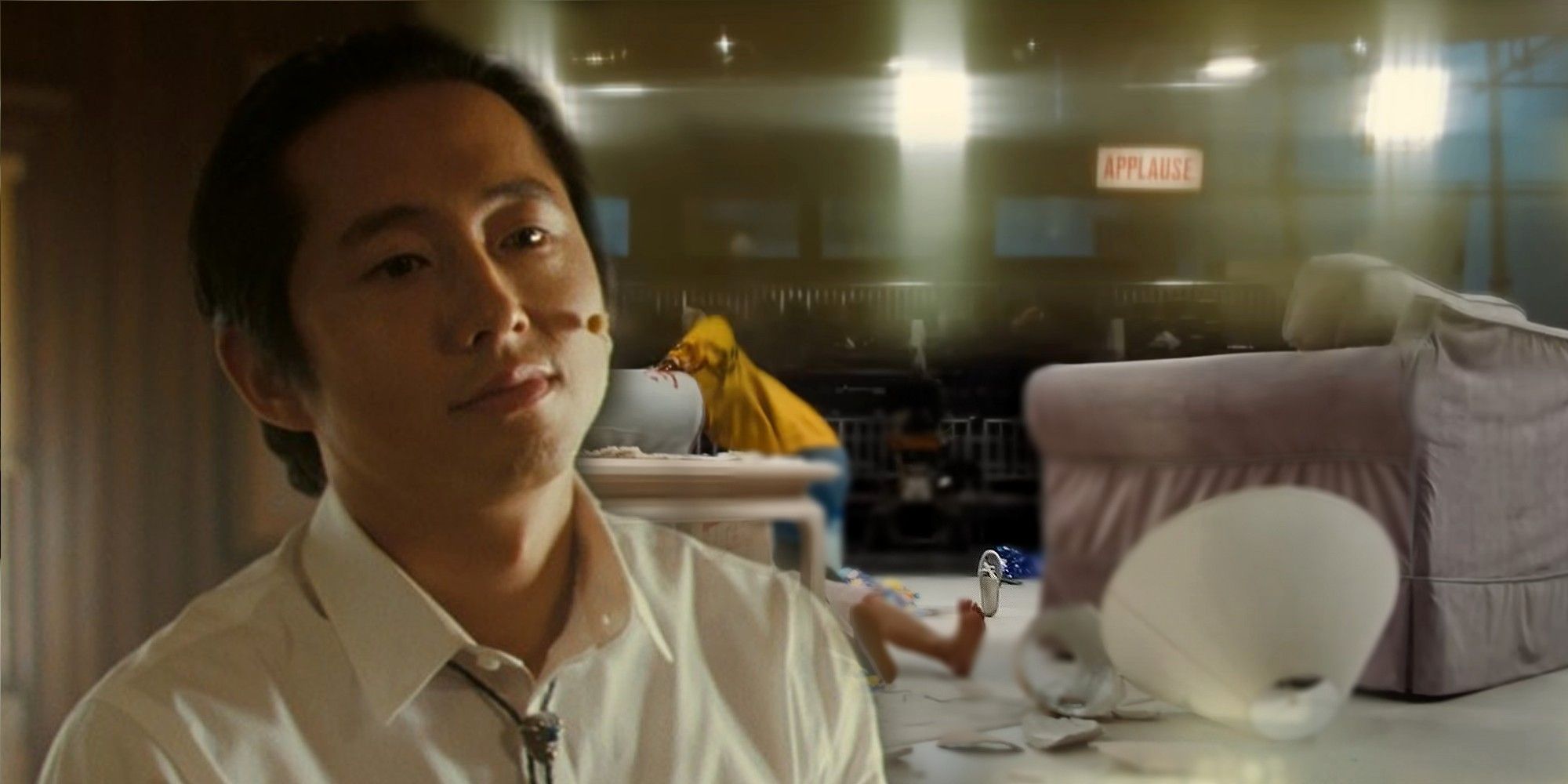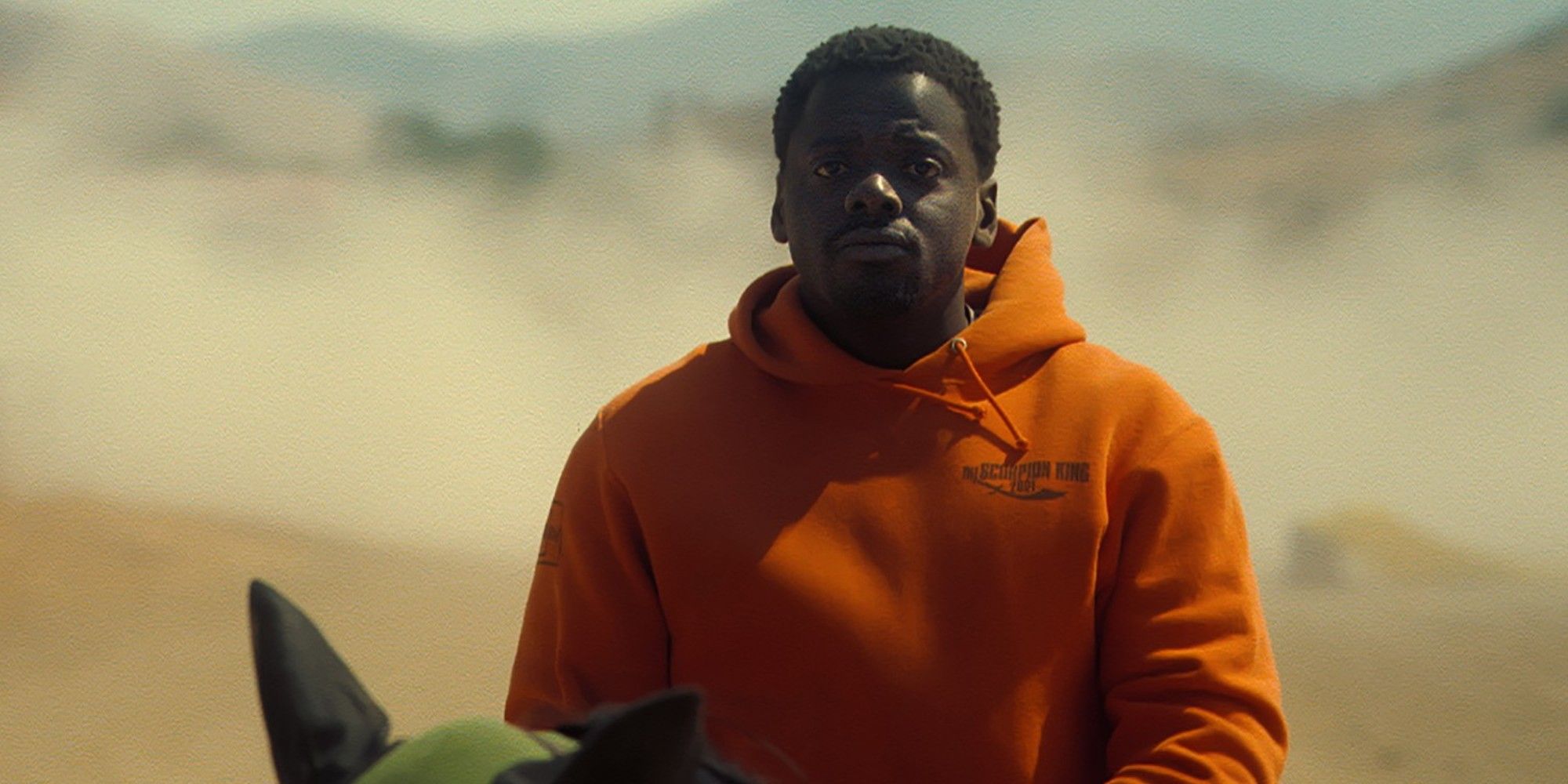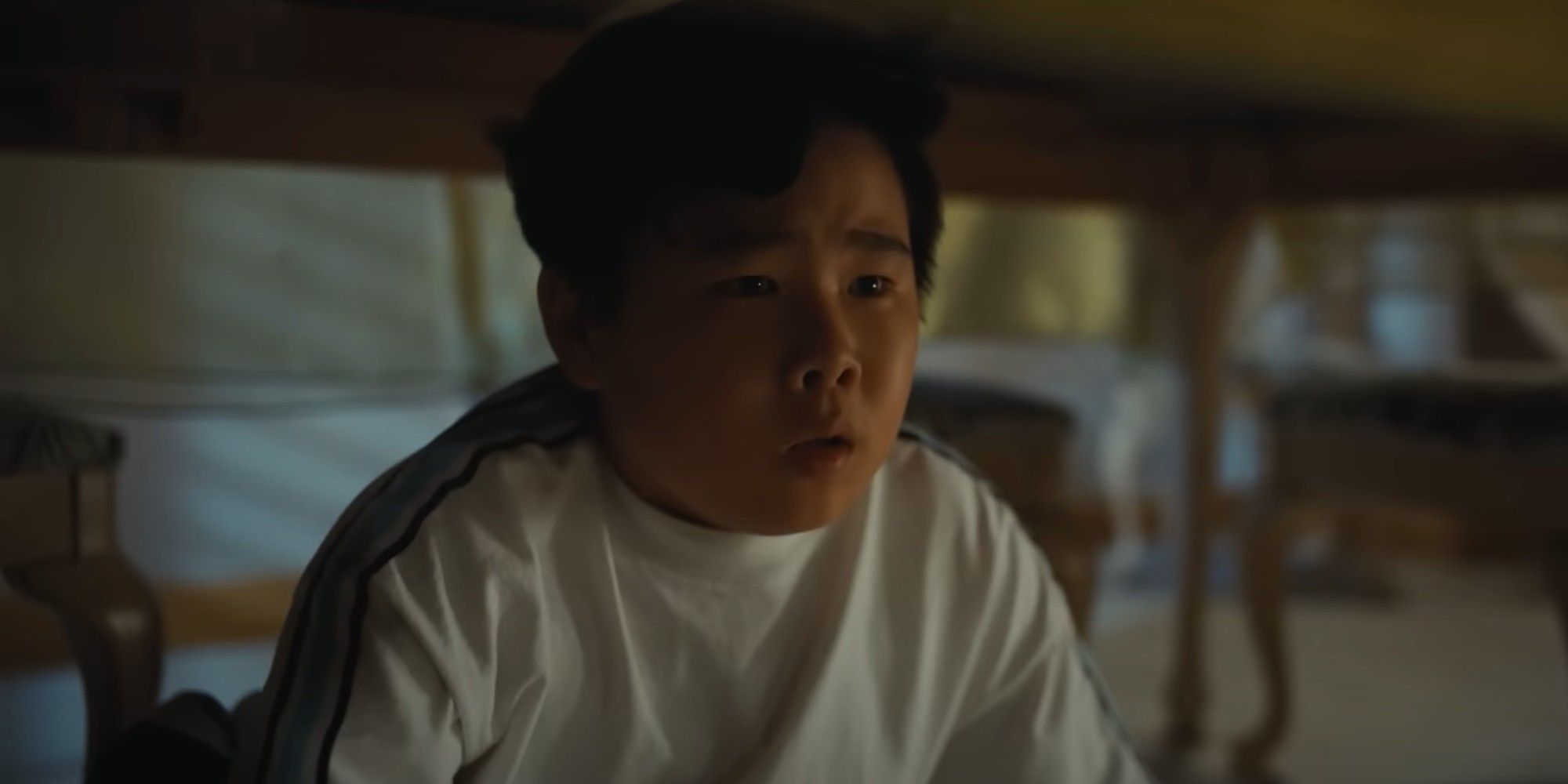This article contains major spoilers for Nope.
In Nope, the latest movie from Jordan Peele, strange, seemingly unexplainable events begin to happen before we even get through the studio logos. The film opens on a blood-drenched sitcom set where a chimpanzee is impatiently nudging the corpse of an actress. Later, a man is killed by a falling nickel as a hail of debris thuds into the dirt on a ranch outside LA. After that, a UFO shows up.
Peele’s latest is full of bizarre moments and imagery. But, as the story unfolds, much of it becomes understandable. The opening credits play out in what appears to be an inflatable wind tunnel and we later find out that it is the mouth/eye of a UFO-shaped creature hunting for prey in Agua Dulce. On the other hand, there are plenty of images that remain enigmatic after the credits roll. What are we to make of a key jutting out of a horse’s haunch? And, more pressingly for many viewers, what is the deal with the shoe standing up — a single drop of blood dotting the toe — after the incident on the Gordy’s Home set?
It’s a surreal moment and I was half-convinced I had imagined it after I left the theater. But, a thread from YouTuber Logan Paul which began, “‘NOPE’ is one of the worst movies I’ve seen in a long time,” forcefully reminded me I hadn’t.
“Why/how did the shoe stand upright on the set of Gordy’s Home?” Paul asked. “This one I’m sure has a reason but I haven’t found anything that makes sense.”
Paul is correct in his assumption that the shoe means something. Peele’s camera lingers on it in a shot from Jupe’s POV, zooming in for a close-up that reveals that, at least from Jupe’s perspective, nothing appears to be propping the shoe up. The shoe has been emphasized in materials outside the confines of the film, as well. The official Nope soundtrack uses a shot of the shoe as its cover art. Though its meaning is elusive, the shoe certainly seems to have importance to Peele and so to the film as a whole.
Though it’s natural to want to understand what this moment means, I think it’s important to note that Nope — more than 99 percent of blockbusters — is tied together by its themes significantly more than by its plot. The film opens on the Gordy’s Home incident not because it directly connects to the film’s central narrative in terms of plot (outside of the obvious connection to Jupe), but because it is integral to the film’s central themes.
The Gordy’s Home incident taught Jupe lessons that are still driving his character when O.J. begins selling him horses. Through the interest surrounding his connection to the event, Jupe has learned that he can take a genuinely traumatic experience and repurpose it as an entertaining piece of his public persona. As Jupe tells O.J. and Emerald how epic the SNL parody of the event was, Peele cuts to a terrified young Jupe huddled beneath a table during the massacre. He has distanced himself enough from that day that, when he discusses it, it is solely through the lens of a version of events he had no part in. An insensitive SNL parody stands in for his own lived experience.
Peele uses Jupe to explore the film’s other themes, too. In his Star Lasso shows, Jupe is attempting to harness a powerful creature for spectacle and profit, just like the creators of Gordy's Home, and he and his audience pay with their lives, just like the cast of Gordy's Home. O.J., meanwhile, is successful in dealing with the creature because he has learned, through decades working with strong and potentially dangerous creatures, that animals have to be approached with respect. He knows that he can't look directly at the UFO and that knowledge saves him, and his team, from meeting the grisly fate that befalls Jupe.
Jupe, on the other hand, has learned that looking is good and potentially salvific. He’s even built a shrine to it. Inside his Gordy’s Home display, the shoe has been memorialized in a glass case, positioned vertically like it was that day on set. He has also built a figurative shrine to looking in the form of Jupiter’s Claim, where tourists come to look at the UFO as Jupe sacrifices horses to it. In both cases, Jupe’s need to look distracts him from real dangers. His penchant for spectacle may be a coping mechanism he learned as a child. Though there was death and danger nearby, he became fixated on the shoe. He was the only member of the cast to make it out unscathed, so it’s likely that Jupe views the shoe as a rabbit’s foot; a symbol of his survival.
Throughout Nope, the notion of spectacle is inseparable from religion. The film opens with a biblical verse, “I will cast abominable filth at you, make you vile, and make you a spectacle” (Nahum 3:6), which frames being seen as a divine punishment. After seeing the “ship,” O.J. asks Emerald if there is a word to describe a bad miracle. Jupe takes on the role of showman priest, sacrificing livestock to bring spectacle to his audience.
Nope leaves plenty of room for speculation about what all of this means. But it’s a testament to the film’s thematic richness that so much of the discussion around it is concerned with its meaning, not its narrative minutiae. It doesn’t matter why the shoe was standing up; what matters is what Jupe sees when he looks at it. I’ve seen Nope twice now and I empathize with him: I also have a hard time looking away.



